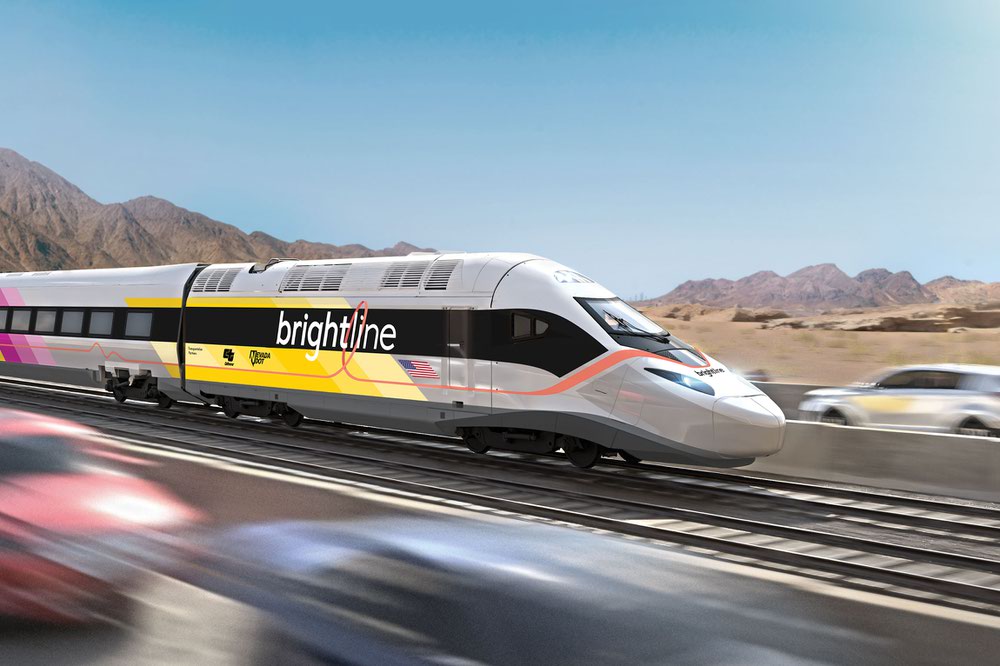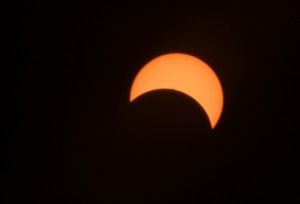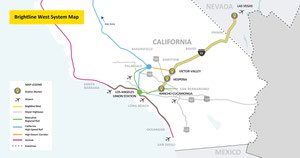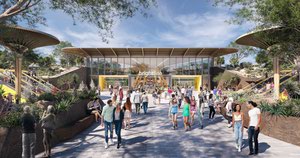Has fear of getting stuck in traffic ever prevented you from going somewhere? For some Southern Californians considering a visit to Las Vegas, the thought of getting stuck in an hours-long backup surely has.
In December 2021, California Gov. Gavin Newsom and then-Nevada Gov. Steve Sisolak jointly announced a project to add a third lane to a five-mile stretch of southbound Interstate 15 between the state line and Barstow, California, to help alleviate congestion on weekends and holidays.
The governors projected that the widening project would be completed by the end of summer 2022.
As summer 2023 approaches, however, the California Department of Transportation (Caltrans) tells the Weekly that, thus far, just one mile has been completed on the freeway’s southbound side.
“Caltrans has opened a one-mile transition lane that allows motorists to merge smoothly from three to two lanes along southbound I-15 at the California-Nevada border,” reads a statement from spokesperson Carolina Rojas. “Plans to improve traffic conditions in the area include the opening of a third, southbound part-time lane for five miles from the state line to the California Department of Food and Agricultural station.”
The statement continued, “The timing of opening the lane is still being determined as Caltrans works with our federal partners and the Southern California Association of Governments on the necessary regulatory approvals.”
Rojas said the current one-mile transition lane has saved drivers traveling from Las Vegas to Southern California an average of 30-40 minutes on non-holiday weekends, “with little to no queuing around the border.”
It remains to be seen how much it helps with holiday travel. Infamously, on January 1, 2023, some drivers encountered backups as long as 18 miles near the state line, leading to frustratingly long delays.
The Weekly reached out to Gov. Joe Lombardo to ask whether his office has been coordinating with California officials on the widening project, and if he had any updates. His spokesperson did not return requests for comment.
Additionally, the Nevada Department of Transportation (NDOT) has been monitoring the situation and analyzing possible solutions, including widening I-15 in town between Sloan Road and Warm Springs Road.
“We are undertaking significant roadway expansion projects and implementing new technologies to enhance traffic management and control,” reads a statement from NDOT spokesman Justin Hopkins, in part.
‘The first true high-speed rail’
While there is no specific timeline or concrete plan for the I-15 widening project, NDOT and privately owned passenger railroad company Brightline have been working on an alternative: laying high-speed rail lines along I-15 between Rancho Cucamonga, California, and Las Vegas. In April, the partners submitted an application for a $3.75 billion grant through the Bipartisan Infrastructure Law to fund the project known as Brightline West.
“Brightline [West] will be the first true high-speed rail system in America and will serve as the blueprint for how we connect corridors that are too short to fly and too far to drive,” Hopkins said in a statement.
The estimated $12 billion project comprises two parts—a 170-mile line from Las Vegas to Victorville, California, and a 49-mile line from Victorville to California cities Hesperia and Rancho Cucamonga. From there, passengers would be able to connect to greater LA and other SoCal destinations via the regional Metrolink rail system.
The Federal Railroad Administration is processing environmental reviews and permit applications for the I-15 right of way. Processing for the Vegas to Victorville permit is expected to be completed in July, and the permitting process for Hesperia and Rancho Cucamonga connections is also underway.
In 2021, Brightline announced it had secured a 110-acre parcel on Las Vegas Boulevard south of Warm Springs Road that would serve as the Las Vegas terminal and “future home of Brightline West.”
“Plans are currently being developed for the terminal station, which will encompass 65,000 square feet of building area and include many innovative amenities for travelers, including ample parking and connections to various ground transportation systems—both existing and planned,” reads a press release from the company.
Ben Porritt, Brightline’s senior vice president of corporate affairs, tells the Weekly that the company’s Florida line has been well-received since it began service in 2018, with travelers using the system for various reasons, including work commutes and leisure.
“I think all of us are looking for an alternative way to hit city to city,” Porritt said. “And I think Brightline’s going to offer a comfortable experience that people have fallen in love with in Florida and will find equally unique in Las Vegas.”
Brightline, which Porritt calls the “first private company to enter the high-speed rail space in America in more than a century,” operates in Florida between Miami and West Palm Beach and has an Orlando connection expected to come online this summer. Porritt says the line sees a “high level” of commuters.
“Once we expand it to Orlando, we’ll see a fairly even split between leisure and business travelers,” Porritt predicts, adding that there are similarities between the Florida and Brightline West markets.
“If you look at Florida, it’s a tourism state … same thing with Las Vegas. You have a number of people coming into the city for its vibrant life, conferences, its tourism,” he says. “From our ridership studies, there’s about 50 million trips per year between Southern California and Las Vegas. And 85% of those are done by car.”
But unlike Brightline Florida’s rail system, which runs on a “freight system” at about 125 miles per hour, Brightline West will go even faster. “There’s actually a federal designation for high-speed rail as anything that goes over 186 miles per hour, which Brightline West will do,” Porritt says.
That could potentially cut the current four-hour travel time by car in half.
According to NDOT estimates, Brightline West would generate more than $10 billion in economic benefits, along with approximately 35,000 construction jobs and 1,000 permanent positions.
After NDOT and Brightline submitted their application for the $3.75 billion federal grant, Nevada’s two U.S. Senators, Catherine Cortez Masto and Jacky Rosen, helped draft a bipartisan letter to the U.S. Department of Transportation in support of the application, citing emissions impacts.
“The system will also align with the administration’s climate goals by diverting millions of automobile users from I-15 onto a faster, more efficient, zero-emission transportation option,” the letter reads. “Each year, Brightline West operations will remove an estimated three million vehicles and over 700 million vehicle miles traveled from the highway, as well as 400,000 tons of CO2 emissions from the atmosphere.”
“Moreover, the project will reduce congestion on the I-15, leading to a faster and more enjoyable travel experience for both drivers and riders alike,” the letter continues.
Based on current projections for permitting completion and financing—more than 70% would be privately funded, according to Porritt—Brightline is “positioned to break ground in the second half of 2023,” with construction expected to be completed in 2027 and the rail system’s launch projected for 2028, Porritt says.




